Did the Nazis and the CIA help shape the history of LSD?
The Nazis used psychedelics in their search for a truth serum.
LSD has had a colourful history.
The psychedelic drug was celebrated in hippie counterculture, before being blamed for America's social ills, to now being used in controversial medical research and treatment.
But there's a lesser-known part of this history: A quest by Nazi Germany to use psychedelics as a truth serum, with the CIA picking up where the Third Reich left off.
"LSD, in a way, had a really bad start, because first it was the SS and then the CIA," German author Norman Ohler tells ABC Radio National's Late Night Live.
An accidental discovery
LSD was discovered less than a century ago, which is relatively recent compared to some other drugs (for example, humans have been using cannabis for millennia).
In 1938, chemist Albert Hofmann was working at the Swiss pharmaceutical company Sandoz, where he first synthesised lysergic acid diethylamide or LSD.
Albert Hofmann has been called the father of LSD.
But it wasn't until five years later, in 1943, that Hofmann accidentally ingested a small amount of this extremely potent drug and experienced its hallucinogenic effects.
"I perceived an uninterrupted stream of fantastic pictures, extraordinary shapes with intense, kaleidoscopic play of colours," Hofmann later described.
On April 19 of that year, Hofmann intentionally took a larger dose, and rode a bicycle home while tripping on the substance — a date still marked by LSD fans as "Bicycle Day".
With its mind-altering effects, the Sandoz company saw the potential for LSD as a "new medicine for mental health", Ohler explains.
According to Ohler, who wrote Tripped: Nazi Germany, the CIA and the Dawn of the Psychedelic Age, the discovery of LSD "had been considered the most promising pharmaceutical development of all time" in some circles.
But these developments were occurring against the backdrop of World War II, and the drug soon became part of the biggest conflict in history.
For his book, Ohler dug around the Sandoz company archives. He says that the then-CEO Arthur Stoll, a "chemist maverick", had notable correspondences with a German man named Richard Kuhn.
"[Kuhn was] a Nobel Prize winner for chemistry, but unfortunately, he was also Hitler's leading biochemist," Ohler says.
Ohler says Stoll not only shared the information about the new drug with his German counterpart, but also sent some samples.
At the time, the Nazis were increasingly paranoid about opponents within the regime.
And they were finding that old-fashioned techniques like physical torture were not all that effective for extracting truth, so were looking at other means, including psychedelics.
"These [LSD] samples were used by the Nazis for their experiments … with [other] psychedelics in order to find new interrogation techniques," Ohler says.
The Nazis "were looking for what they called the 'truth drug'".
Experiments in Dachau
While the Nazis were in power in Germany from 1933 to 1945, they built and operated more than 1,000 concentration camps.
Many of these were used by the Nazis for medical experimentation on humans, including at the Dachau camp.
Dachau was the Nazis' longest-running concentration camp.
Ohler visited Dachau and, working with an archivist there, located SS documents describing tests that were conducted using LSD "to find out how to extract secrets from prisoners".
These documents were from early in the process, expressing an optimism about what could be achieved with the drug. But there were no notes from later on.
"The rest were taken by the Americans when they liberated Dachau," Ohler explains.
"They found all these SS reports, and the Americans were always very interested in what the Nazis were researching, because the Germans had this aura of being good researchers and good scientists," he says.
"The American military became very interested in LSD. Then the CIA took over."
Turn Moscow into a madhouse?
The next part of the LSD story — which is more well known — occurred in the US against the backdrop of the Cold War.
The Americans "basically continued the Nazi experiments in America on unwitting American citizens", Ohler says.
By the 1950s, the US was in the grips of McCarthy-era paranoia and there were rumours that the Soviets were brainwashing people with drugs.
Work on so-called "brain warfare" or developing pharmacological weapons happened alongside the space race and nuclear race.
Dubbed Project MK-Ultra, the CIA examined the effects of psychoactive drugs like LSD on human subjects — often without their consent.
This mind control program was so secret that most people working for the CIA didn't even know it existed.
The CIA once took a great interest in LSD.
While mind control was elusive, the Americans did find that LSD could seriously disrupt someone's normal thinking. So they looked into weaponising the drug.
"[The US] was wondering, 'Could we, for example, slip LSD into the water supply of a Soviet battleship and therefore make that battleship ineffective?'," Ohler says.
"They were also wondering 'Could we spike the water supply of a big city … Turn the whole of Moscow into a madhouse?' Because they were also scared that the Russians would do the same in America."
The CIA failed to ever develop a pharmacological weapon, but in the years that followed, Project MK-Ultra faced condemnation.
In 1953, army chemist Frank Olson was among those who was unwittingly dosed with LSD, and he jumped out of a New York hotel room to his death.
Decades later, when details around the program became public, Olson's family threatened legal action against the US government, and later settled.
Full circle
By the 1960s, LSD started popping up on university campuses around America. Word spread and it became popular with everyone from hippies to Hollywood stars, often taken in uncontrolled settings.
John Lennon once joked about the government's efforts, saying, "We must always remember to thank the CIA and the army for LSD … they brought out LSD to control people, and what they did was give us freedom."
An LSD-based meditation centre in New York in the late 1960s.
All the while, LSD was still being researched as a drug to treat mental illnesses and other conditions.
But as LSD became more associated with American counterculture and anti-authoritarianism, the government clamped down on the drug. It was illegal in the US by the late 1960s, with other countries following suit.
"The reason for making it illegal was to have a tool in their hand against the peace movement, which was growing, [and] against the Vietnam War," Ohler says.
"From that moment on, it was illegal to manufacture LSD and also research with LSD … So from the 1960s until about 2015, there was basically no LSD research anywhere."
However, Ohler says the history of LSD has gone full circle from its early days at the Swiss pharmaceutical company Sandoz, and it is once again being investigated for its potential health benefits.
LSD is illegal in Australia and its risks have been well documented.
Yet there are signs of a shift around psychedelics in Australia.
Last year, the Therapeutic Goods Administration announced it would allow the use of MDMA (or ecstasy) and psilocybin (the active ingredient in magic mushrooms) for specific mental health illnesses under strict conditions.
The push to use psychedelic treatments for things like anxiety and depression has been met with both excitement and concern.
Ohler has used LSD multiple times and strongly believes in its medical benefits — even giving his mother the drug (with a doctor's approval) to treat a medical condition at their home in Germany.
LSD and other psychedelics remain Schedule 1 prohibited substances in the European Union, except for scientific or limited medical purposes. It also remains illegal in the United States.
Ohler pushes back against what he calls "propaganda" that LSD is the "devil that will destroy your brain".
But he has one important caveat.
"Obviously, there are dangers to taking high doses of LSD, just like there are dangers of taking high doses of alcohol or any other drug."
Want to go beyond the news cycle?
Get a weekly dose of art, books, history, culture, technology, politics and more with the ABC Radio National newsletterYour information is being handled in accordance with the ABC Privacy Collection Statement.By:ABC(责任编辑:admin)
下一篇:The US presidential election gets the headlines, but Americans will also vote in thousands of down ballot races for everything from judges to tax collectors
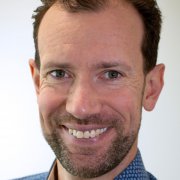 Socceroos rescue a point
Socceroos rescue a point 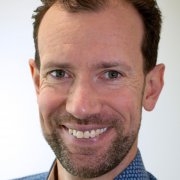 Wallabies thrash Wales 52
Wallabies thrash Wales 52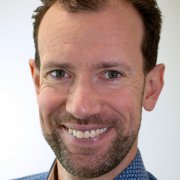 Jake Paul beats Mike Tyso
Jake Paul beats Mike Tyso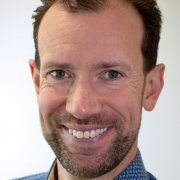 Live updates: England vs
Live updates: England vs 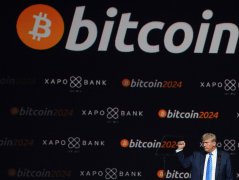 US election 2024: Donald
US election 2024: Donald 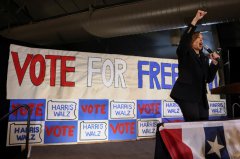 US election live: Kamala
US election live: Kamala
- ·North Korea's latest weapon agains
- ·Hezbollah says Israel 'cannot impo
- ·Inside the rise of US oligarchs and how
- ·Thailand's worst suspected serial
- ·Tabi shoes are turning heads from Holly
- ·FBI arrests Florida man planning attack
- ·Illegal immigrant gets life sentence fo
- ·Bibles, water, watches and sneakers: Do
- ·North Korea's latest weapon against
- ·Hezbollah says Israel 'cannot impose
- ·Inside the rise of US oligarchs and how i
- ·Thailand's worst suspected serial ki
- ·Tabi shoes are turning heads from Hollywo
- ·FBI arrests Florida man planning attack o
- ·Illegal immigrant gets life sentence for
- ·Bibles, water, watches and sneakers: Dona
- ·US to give Kyiv anti-personnel landmines
- ·An arrest warrant for Benjamin Netanyahu
- ·One of Vietnam's high-profile politi
- ·Shanghai Walmart Attack: A Man Randomly S
- ·South Korean police officers jailed over
- ·Cambodia publicly shames maid deported af
- ·North Korea to use all forces including n
- ·Philippines condemns China attack of Viet
- ·US adds 2 more Chinese companies to Uyghu
- ·North Korean defector steals South Korean
- ·Malaysia deports Cambodian worker for cal
- ·Rebels battle for Myanmar junta’s weste

